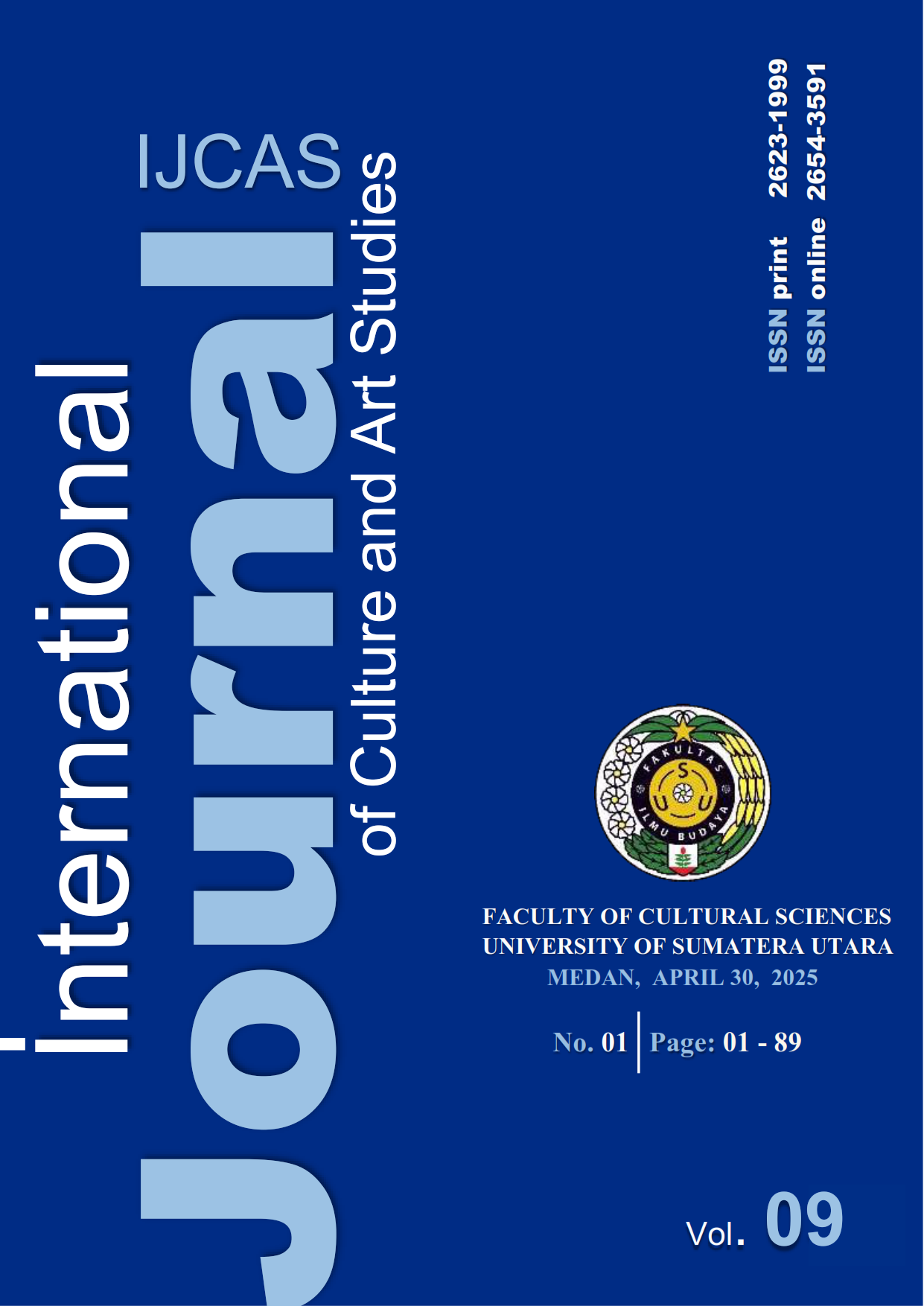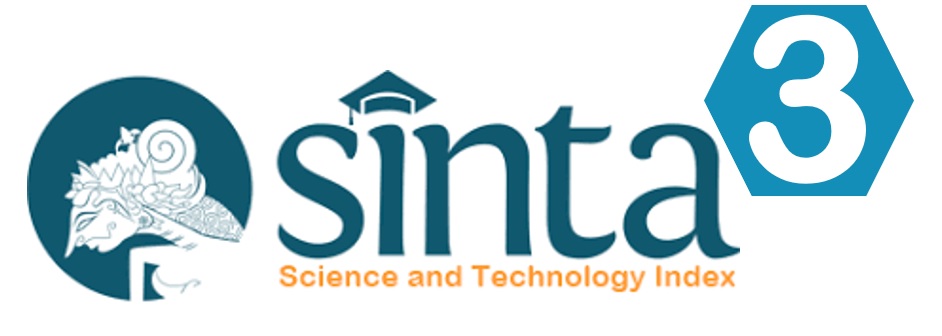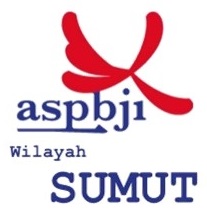Intonation and Intensity of President Joko Widodo's Speech
DOI:
https://doi.org/10.32734/ijcas.v9i1.20265Keywords:
Intonation, Intensity, Speech, President Joko Widodo, PraatAbstract
This study aims to investigate the prosody of speech by the head of state related to the answer to the question that has recently gone viral and trending is President Jokowi's speech answer to the question on YouTube, with the title "Why the Capital City Not Move to Papua?". The head of state of the Republic of Indonesia (Joko Widodo) used data in the form of speech related to the conversation. The utterances were obtained from a video titled "Why the Capital City Did Not Move to Papua? Moreover, it is downloaded from YouTube. Then, the data is selected from several sentences President Joko Widodo spoke. The voice data will be extracted and coded at the analysis stage using Praat 6.0.54 (1). This research was conducted because, until now, the study of acoustic phonetics has rarely been done. On the other hand, phonetic descriptions, especially acoustic phonetic descriptions, namely the intonation and intensity of President JokoWidodo's speech, are important to study. The purpose of this study is to physically document sound, preservation, teaching, and language dignity in the midst of the symptoms of language shift. This study is an effort that is in line with the scientific aspects of phonetics and maintaining language heritage in terms of speech. This study's results prove differences in acoustic values in the measurement results of the data "Jokowi's Answer Asked by Elementary School Children Why the Capital City is Not in Papua" on the VIVA.CO.ID YouTube account. All acoustic features were measured, namely frequency, duration, pressure, and intensity. From the analysis results, it can be concluded that the resulting tone contour shows two patterns: the rising and descending patterns. The rising pattern at the end of the utterance indicates that the utterance is unfinished, while the falling pattern at the end explains that the utterance's intonation is final. In addition, there are many increases in frequency and intensity in the data, where the increase mostly occurs when Mr. Jokowi mentions the words "Papua," "Aceh," "Sabang," "Marauke," "Capital," "North," "South," "Gitu," and "Yes."
Downloads
References
Ariesta, W., Qoyyimah, A. L. N., & Markhamah, M. (2021). Shifting Standard Language: Elitist Language Variety in Humor Recehku Instagram Account. Diglosia: Journal of Language, Literature, and Teaching Studies, 4(3), 259–274.
Chaer, A. (2020). Indonesian phonology. Rineka Cipta.
Erwina, E. (2020). Analysis of Pronunciation Errors in Talk Show Programs on Indonesian Television. Ranah: Journal of Language Studies, 9(2), 178.
Erwina, E. (2020). Intonation of Pleasure in Langkat Malay Speech by Using the Average Method. Indonesian Language Education and Literature, 6(1), 47.
Erwina, E. (2021). Perception of the Speech Intonation of the Malay Nobility Against Emotions. Indonesian Language Education and Literature, 6(2), 220.
Hart, J. T., Collier, R., & Cohen, A. (1990). A perceptual study of intonation.
Hayward, K. (2000). Experimental phonetics: An introduction. Longman.
Heryono, H. (2019). Measurement of Pitch and Highest Diphthong Intensity Using the PRAAT Program. Journal of Computational Linguistics (JLK), 2(2).
Huinck, W. J., Van Lieshout, P. H. H. M., Peters, H. F. M., & Hulstijn, W. (2004). Gestural overlap in consonant clusters: Effects on the fluent speech of stuttering and non-stuttering subjects. 1 J Fluency Disord, 29(1).
Ladd, D. R. (2008). Intonational phonology. Cambridge: Cambridge University Press.
Mubin, I. S., & Huntley, M. L. (2021). Intonation of Indonesian Declarative and Interrogative Speech by Korean Learners. Journal of Cultural Sciences, 9(2).
Nooteboom, S. (1997). The prosody of speech: Melody and rhythm. Retrieved from https://www.researchgate.net/publication/46675980
Putri, H. H., & Ermanto, E. (2022). Language Politeness of Warganet in Deddy Corbuzier's Podcast. Diglosia: Journal of Language, Literature, and Teaching Studies, 5(4).
Kartikasari, R.A. F., Sekartedjo, S & Arifianto, D. (2013). Base Frequency Manipulation Using the STRAIGHT Method for Expressive Speech Sound Synthesis in Indonesian. ITS Engineering Journal, 2(2), 448–450. Retrieved from https://ejurnal.its.ac.id/index.php/teknik/article/view/3834
Rois, H., Yustanto, H., & Wibowo, A. H. (2022). Melody structure in Indonesia language intonation: An experiment on the gender dimension. Retrieved from https://jurnal.uns.ac.id/prosidingsemantiks/article/view/65302
Sugiyono. (2003). Guidelines for spoken language research: phonetics (93 p.). Language Center, Ministry of National Education.
Suryani, Y., & Darmayanti, N. (2012). Indonesian language proficiency of Korean speakers: PROSODY STUDY WITH EXPERIMENTAL PHONETIC APPROACH. Sigma-Mu, 4(2).
Syarfina, T. (2008). Acoustic Features as Social Markers of Deli Malay Speakers (Doctoral dissertation). USU Postgraduate Program.
Syarfina, T. (2014). Acoustic Characteristics of Malay Coal Dialect. Kandai, 10(2).
Syarfina, T., Armis, M. K., & Harahap, A. I. (2023). Prosody analysis of acoustic phonetic study on Angkola Batak language. Fon: Journal of Indonesian Language and Literature Education, 19(1), 158–165.
Syarfina, T., Kuswantari, T. D., Rit Atusaadah, M., & Sitinjak, M. (2022). Prosody Analysis in Toba Batak Language: An Acoustic Phonetic Study. SUAR BETANG, 17(2), 211–221.
Van Heuven, V. J. (1994). Introducing prosodic phonetics. Vakgroep Talen en Culturen van Zuidoost-Azie en Oceanie, 9, 1–26. Retrieved from https://www.researchgate.net/publication/28639880
Welbi, P., & Ito, K. (2002). Pratt Tutorial. The Ohio State University.
Downloads
Published
How to Cite
Issue
Section
License
Copyright (c) 2025 Emmy Erwina, Alvy Mawaddah, Muhammad Kiki Wardana

This work is licensed under a Creative Commons Attribution-ShareAlike 4.0 International License.













